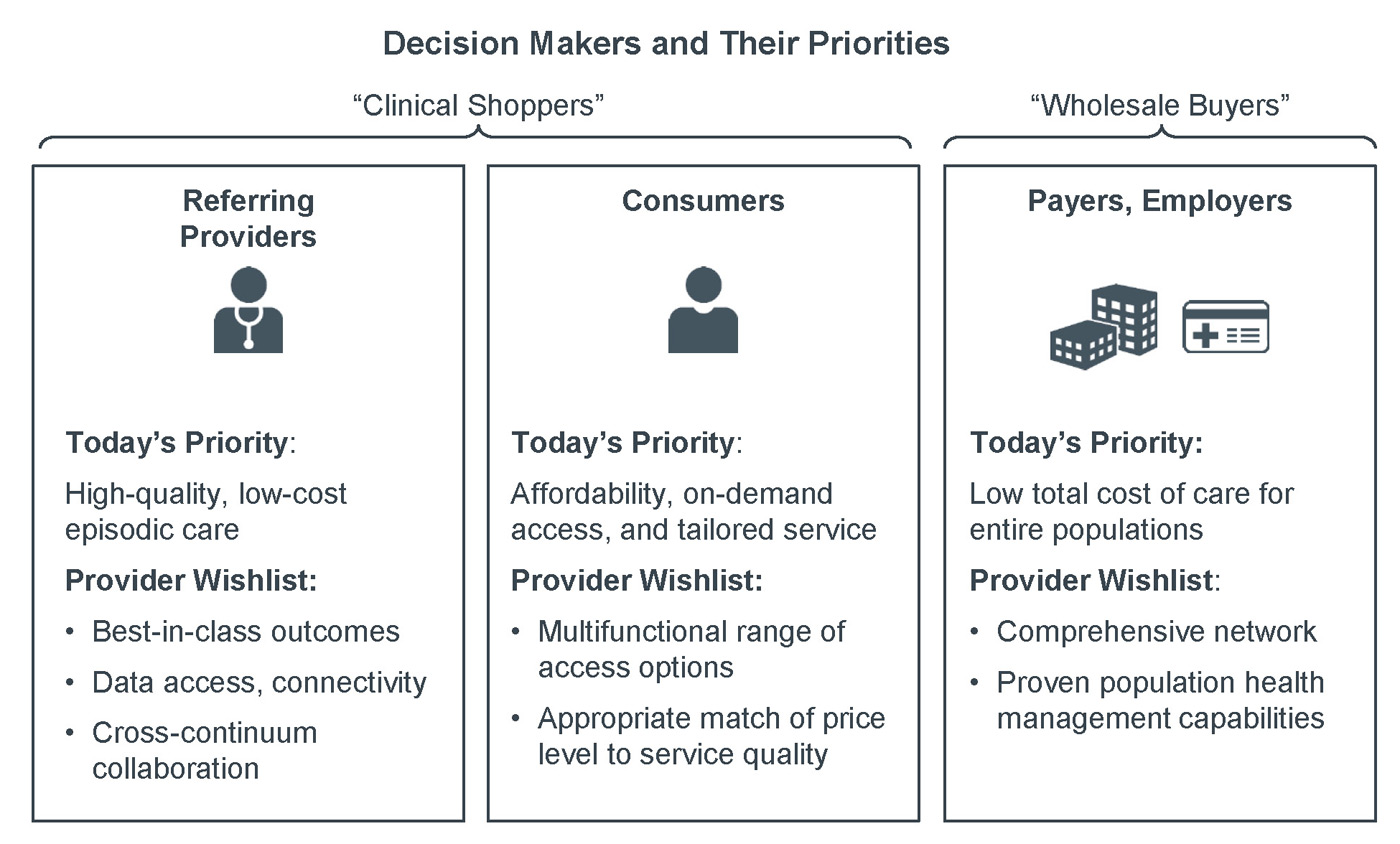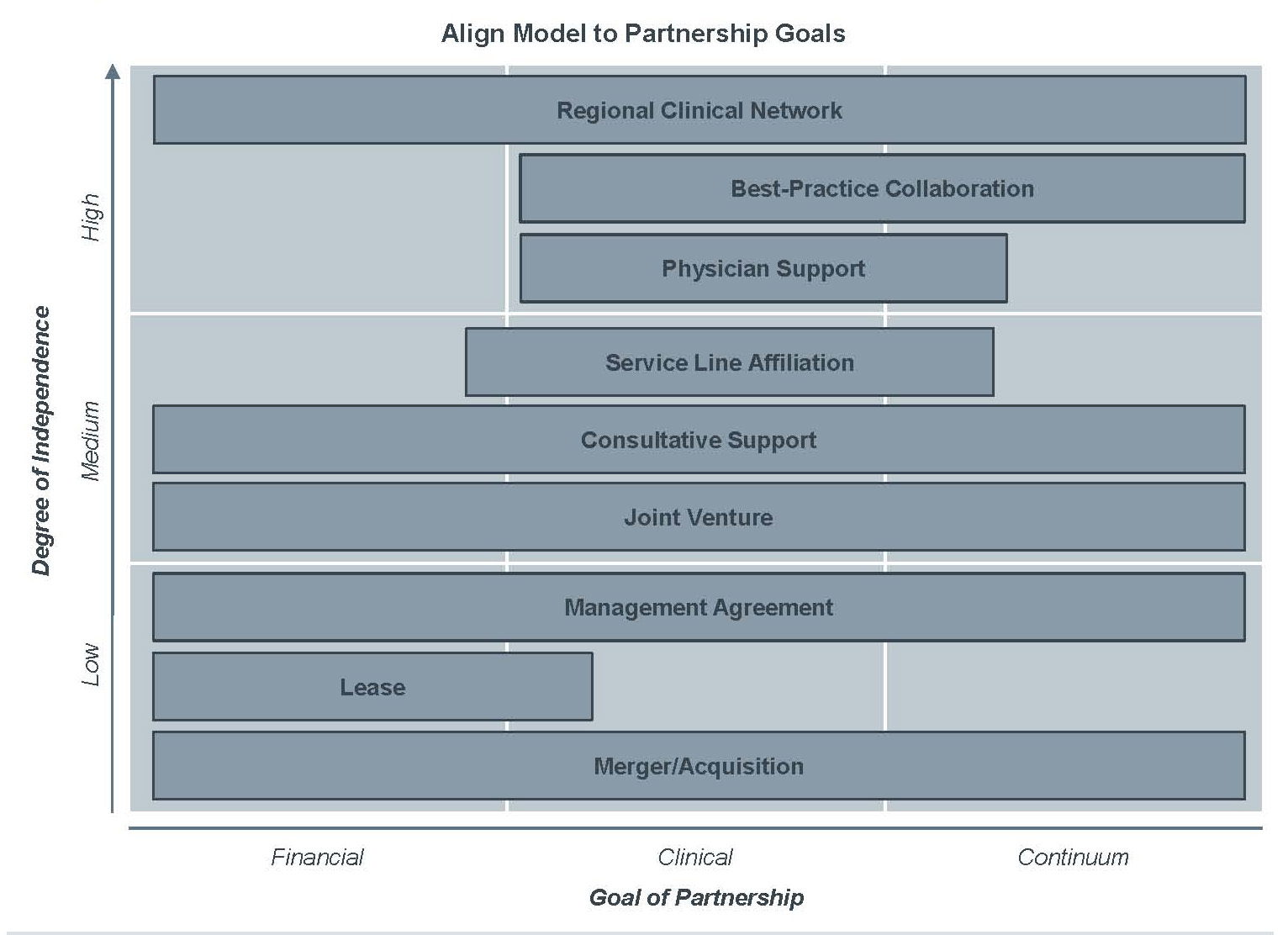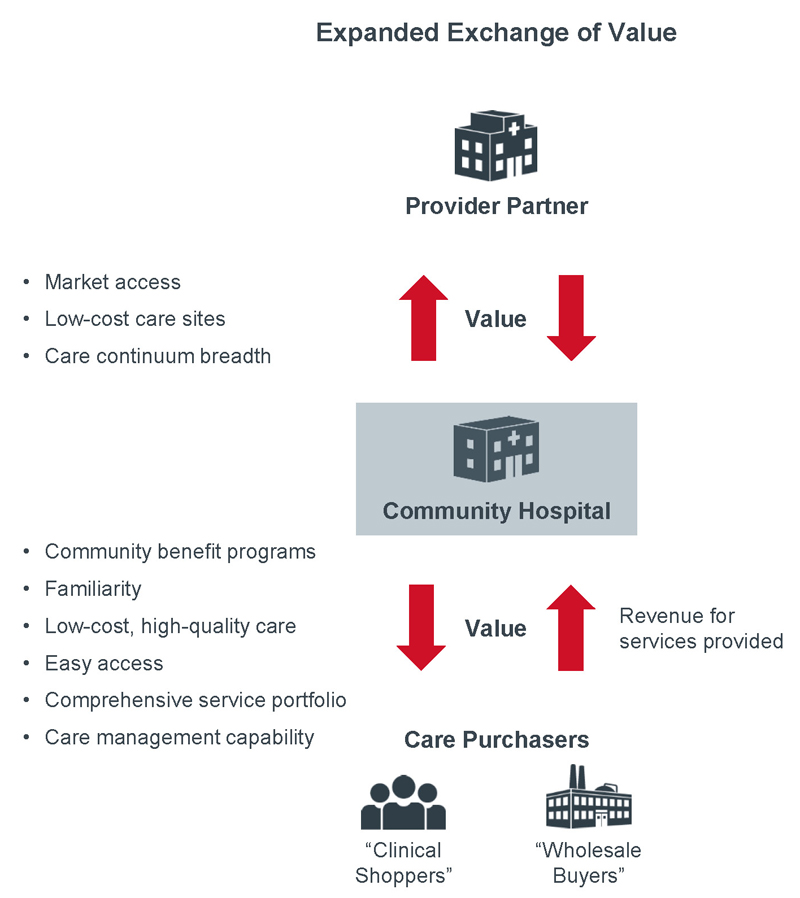Auto logout in seconds.
Continue LogoutThe market pressures facing hospitals today are felt most acutely by community hospitals, who frequently lack the financial resources to generate and retain the resources needed to operate in today’s market, let alone invest more for future growth.
Capital-intensive investment mandates such as meeting meaningful use requirements, preparing effectively for ICD-10, and building a robust care management infrastructure entail large fixed costs that often do not scale proportionally with the size of the organization.
Civic-minded tradition not enough for today's purchasers
Community hospitals are, without question, important pillars of the communities in which they operate. But they are not indispensable, at least not in the eyes of the market.
Community hospital leaders, particularly those in rural areas, often cite a lack of local competition as the key to their success. However, as the boundaries of competition expand to include regional and national players, no hospital is likely to have a market to itself for long.
Health care purchasers are also becoming more price-sensitive and more willing to redirect volume, including over long distances. An increasingly competitive market will only reward demonstrable superiority in outcomes, cost, or some other tangible measure.

Independence is possible, but isolationism is not
 Virtually all community hospitals will need to consider a range of partnership and affiliation opportunities to strengthen their value proposition to health care purchasers.
Virtually all community hospitals will need to consider a range of partnership and affiliation opportunities to strengthen their value proposition to health care purchasers.
Even hospitals that are independent in a corporate sense typically participate in various partnerships or affiliations, such as clinical affiliations, co-branded service lines, and cooperation agreements for sharing expertise and best practices.
In debating partnership alternatives, the discussion of motivation must precede discussion of means. Community hospital leaders need to recognize where the gaps in their value propositions to purchasers are and then assess how potential partners may be able to fill those gaps.
The exchange of value must be reciprocal
 There is increased competition between community hospitals for partners, which means potential partners can be more discriminating about the hospitals with whom they choose to collaborate.
There is increased competition between community hospitals for partners, which means potential partners can be more discriminating about the hospitals with whom they choose to collaborate.
Although "opportunities [for acquisition] will be abundant," Tenet is now trying to figure out "how to be selective and do [the acquisitions] intelligently."
—Trevor Fetter, CEO, Tenet Healthcare
Regardless of the type of partnership, community hospitals must demonstrate they are not just taking value from the partnership, but also providing value in return.
Plan your response to a consolidating market
Organizations evaluating the potential role of partnerships in advancing hospital priorities must answer three questions:
1. What are your goals for the partnership?
Specific goals for partnership—with measurable metrics to evaluate partnership success—are a necessary first step. Across partnership models, goals typically align with financial, clinical, or continuum advantages.
2. Who are your preferred partners?
Well defined goals help identify necessary partner characteristics. Clear goals also establish the appropriate geographic proximity between partners.
3. What are the most attractive models for achieving your goals?
With goals aligned across partners, organizations can determine the most effective partnership model. The model should balance goals against desired levels of independence or integration.
This white paper includes a diagnostic to help answer these questions, facilitate discussions among key stakeholders, and select the right model for partnership.
Don't miss out on the latest Advisory Board insights
Create your free account to access 1 resource, including the latest research and webinars.
Want access without creating an account?
You have 1 free members-only resource remaining this month.
1 free members-only resources remaining
1 free members-only resources remaining
You've reached your limit of free insights
Become a member to access all of Advisory Board's resources, events, and experts
Never miss out on the latest innovative health care content tailored to you.
Benefits include:
You've reached your limit of free insights
Become a member to access all of Advisory Board's resources, events, and experts
Never miss out on the latest innovative health care content tailored to you.
Benefits include:
This content is available through your Curated Research partnership with Advisory Board. Click on ‘view this resource’ to read the full piece
Email ask@advisory.com to learn more
Click on ‘Become a Member’ to learn about the benefits of a Full-Access partnership with Advisory Board
Never miss out on the latest innovative health care content tailored to you.
Benefits Include:
This is for members only. Learn more.
Click on ‘Become a Member’ to learn about the benefits of a Full-Access partnership with Advisory Board
Never miss out on the latest innovative health care content tailored to you.
